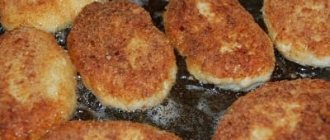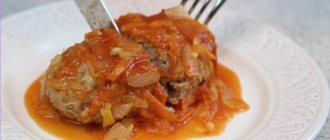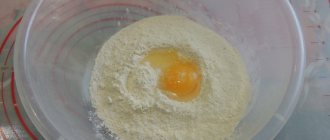Ukraine is considered the birthplace of cabbage rolls, although similar traditions of wrapping the filling in a wrapper are found in other cuisines of the world. The filling most often used is a combination of minced meat and rice. Very tasty cabbage rolls with buckwheat and minced meat, with mushrooms and just vegetables.
In general, the cooking process is long and includes several stages: you need to prepare the filling separately, remove the cabbage leaves, form cabbage rolls, and then simmer them in the sauce. So you will have to be patient and have a well-written recipe, although the cabbage rolls are truly worthy of it!
Choosing cabbage for cabbage rolls
White cabbage, Savoy, Peking cabbage - all these types of cabbage are suitable for making cabbage rolls. But a head of white cabbage is still considered classic, and you can use both young and old. In the first case, the cabbage rolls turn out to be especially tender, and preparing the leaves is much easier; they roll up perfectly and keep their shape.
It is advisable to take the size of the head of cabbage not very large, otherwise the cabbage rolls will turn out too large. But a small head will not work either, because it will be inconvenient to wrap the filling in the leaves. The optimal size is a medium dense head of cabbage, weighing 500-600 grams.
Which rice is best for cabbage rolls?
Both round and long grain rice will do. If you want the filling to be crumbly, take steamed rice - there is always a corresponding mark on the package. If you prefer a denser “cutlet” inside, then use the so-called sushi rice. Crushed rice is absolutely not suitable for stuffed cabbage rolls - the filling will be too liquid, when cooked it will turn into porridge, and practically will not absorb the aroma of meat and sauce.
Whatever rice you choose, you must first boil it until half cooked. Raw cereal will absorb all the meat juice, so the filling will be too dry. If you take fully cooked rice, then during stewing it will completely boil down, turning into a porridge-like mass.
Semi-finished products in a frying pan
They often help out when you really want to eat, but there is absolutely no time, and sometimes even energy, to fully prepare the dish. We understand, of course, that there is absolutely no benefit to them, and there is a possibility of getting digestive problems, but we take it and eat it. Moreover, the dish is almost ready, and the cabbage rolls will take a few minutes to stew if you take one package and cook it using a deep frying pan. Before placing semi-finished products in a heated frying pan, they do not need to be defrosted. Lightly fry on both sides and, adding sauce, simmer for about thirty minutes.
How to cook cabbage rolls with rice and meat
- To prepare the filling we need rice, cooked until half cooked. To do this, pour 1 liter of water into a saucepan, bring it to a boil and add 0.5 tsp. salt. Wash the rice in cold water and add it to boiling water. Cook for 5 minutes until half cooked, then place on a sieve and rinse with cold water - this will remove excess starch and the filling will be more crumbly.
- We peel a large onion and divide it into 6-8 parts. Cut the pork into small pieces, removing all tendons and membranes as much as possible.
- We pass the meat and onions through a large meat grinder twice. Combine the resulting minced meat with boiled rice.
- Add 0.5 tsp. salt, 2 chips. a mixture of ground peppers and 0.5 tbsp. cold water (it will be instantly absorbed and will add special juiciness to the filling). Mix thoroughly and place the bowl in the refrigerator for 30 minutes.
- In the meantime, we're working on cabbage. We clean the top crushed and damaged leaves from the head of cabbage. Using a sharp knife, carefully cut out the stalk.
- Pour water into a large saucepan (about halfway) and bring it to a boil. Add a little salt to the boiling water and carefully, so as not to burn yourself, lower the head of cabbage into it. It is desirable that the water completely covers the leaves. Boil for 2 minutes, carefully remove the top leaves and return the cabbage back to the pan. If the cabbage is old, boil it longer - 4 minutes.
- We repeat the procedure until all the cabbage leaves have been removed. It is important not to overcook them and not get burned when “undressing” the head of cabbage. The most convenient way to remove cabbage from boiling water is to stick it on a fork with a long handle.
- If the cabbage is old, cut off the hard triangle section at the stalk of the removed leaves and lightly beat off the leaves. Young cabbage is very tender, so we skip this step and immediately proceed to forming the cabbage rolls. Scoop out some minced meat, form it into a cutlet and place it in the center of the sheet.
- Roll the sheet into an envelope or tube so that the filling is inside. A medium-sized head of cabbage will yield 20-25 pieces. Place them tightly in a saucepan with a thick bottom.
- For the sauce, sauté the onions in vegetable oil. Add flour and fry it for 1 minute. Pour in 1 liter of water and stir well so that there are no lumps. Add carrots, chopped on a coarse grater, salt and pepper. Simmer under the lid until the carrots are soft, then add the grated tomato (without skin), tomato paste and sour cream. Let it boil for 5 minutes and remove from heat.
- Pour the resulting sauce over the cabbage rolls (add a little more water if necessary if the liquid does not cover them completely) and simmer over low heat for 40 minutes. If the cabbage is old, the cooking time should be increased to 1 hour.
Pilaf
For pilaf, the least sticky rice is usually used, because it should be crumbly. The Devzira variety is often used, but others can be used. For example, for Indian pilaf biryani, it is better to choose long basmati rice. You can even take short-grain varieties of rice, such as laser, arborio, but then you need to rinse it thoroughly before cooking.
Pilaf "Chaikhansky"
Photo: Chaikhona No. 1 Timur Lansky restaurant chain
The author of the recipe is Shamsiddin Kamalov, brand chef of the Chaikhona No. 1 restaurant chain by Timur Lansky.
- 250 g lamb tail
- 150 ml vegetable oil
- 200 g onions
- 1.1 kg lamb pulp
- 1.1 kg yellow carrots
- 10 g cumin
- 30 g salt
- 50 g garlic
- 1 kg rice laser
- Lamb fat tail
Step 1. Soak the rice in warm water for 1 hour, then rinse in water.
Step 2. Heat the cauldron, cut the fat tail into pieces 2 by 2, melt in the cauldron until the cracklings are dark golden brown.
Step 3. Remove the cracklings, add vegetable oil and heat the oil again.
Step 4. Peel the onion and cut into half rings. Place the chopped onion in a cauldron and fry until light brown.
Step 5. Clean the meat, wash under running water, cut into 3-4 cm pieces.
Step 6. Peel the garlic, cut off the top. Add meat and garlic to the cauldron when the onion turns light brown. Fry the meat until half cooked, until golden brown.
Step 7. Peel the carrots, rinse, cut into strips 6-7 cm long and 5 mm wide.
Step 8. Add carrots to the semi-cooked meat in two stages. The first stage is to add half the carrots and fry for 2-3 minutes, mix completely. Next, add the remaining carrots.
Step 9. After the carrots become soft, add water (1.2 l), spices, salt, cumin and simmer over low heat for 20 minutes.
Step 10. After 5 minutes, remove the chili pepper, after 10 minutes, remove the garlic. Cook for another 20-30 minutes.
Step 11. After this, lay out the rice and carefully spread it evenly over the surface. Cover with a lid and increase the temperature to the original.
Step 12. After the pilaf boils, remove the lid and add the rest of the cumin. Gently mix only the cumin with the rice. Next, reduce the temperature and cover with a lid.
Step 13. After 5 minutes, mix the rice with cumin again, cover with a lid and leave for another 5 minutes. Next, remove the lid and carefully form a pyramid of rice.
Step 14. Cover with a lid and reduce the temperature by half. Let it brew for 10-15 minutes. And turn off the fire. The pilaf is ready.
Step 15. Remove the finished pilaf from the stove, stir directly in the cauldron and let cool.
Tips for making cabbage rolls.
Before answering the question about how to cook cabbage rolls, let’s look at a few tips for preparing those same delicacies.
- You need to choose cabbage carefully so that there are no spoiled leaves. It is better to choose greener cabbage than white. And the varieties that are suitable are flattened, not round. They have a smaller stalk and larger leaves.
- When blanching cabbage, you can add vinegar to the water. It will prevent sheets from tearing and maintain integrity.
- You can add various seasonings and herbs to the filling, such as cumin.
- If you use minced meat without fat, the cabbage rolls will be a little dry. You can then add a piece of butter to the filling for each cabbage roll.
- To make the cabbage rolls more juicy, add more fried vegetables to the filling.
- If the sauce uses tomato and it is sour, the cooking time will increase.
- Pre-frying the cabbage rolls in a frying pan will help improve the taste and make the sauce thicker. It is better to fry cabbage rolls by rolling them in flour.
- Gravy for cabbage rolls does not need to be diluted with water. The best broths for this are mushroom, vegetable or meat.
All the recipes presented below have been tested by us and are quite versatile. Stuffed cabbage rolls can be cooked in a frying pan, in a saucepan, oven or slow cooker. There are no restrictions, experiment and create your own recipe.
Well, we’ll start learning how to cook cabbage rolls in different ways.
Classic cabbage rolls with rice and minced meat.
Everything is quite simple, but the main thing in this recipe, and like in the others, is to add not only rice and meat to the filling, but also sautéed vegetables and herbs. The cabbage rolls will be much juicier.
Well, cabbage. We take it not just any kind, but with thin leaves. It is better to take flat-shaped heads of cabbage.
To get an excellent taste, add more sour cream or heavy cream to the gravy.
We will need:
- Cabbage - 1 kg;
- Minced meat - 250-300 g;
- Carrots - 2-3 pcs;
- Onions - 2-3 pcs;
- Greens (mixture) to taste;
- Vegetable oil;
- Black and allspice pepper to taste;
- Paprika to taste;
- Salt to taste;
- Tomato juice - 1 glass (or tomato paste - 1 tablespoon).
For filling
- Vegetable, meat broth or boiled water - 0.5 l;
- Sour cream (15% - 20%) - 400 ml;
- tomato and vegetable sautéing;
- Salt to taste;
- Greens to taste;
- Pepper to taste.
How to cook cabbage rolls? Where to start? Let's start with tomato and vegetable sautéing. Three carrots on a coarse grater. Cut the onion into small cubes.
Fry all this in oil until soft and add tomato juice or paste.
Tomato paste should be of good quality and diluted with a glass of water.
Then add salt and pepper to taste. Add 1 teaspoon of sugar. Let's mix everything well.
Now wash the rice well and pour boiling water over it, let it cool.
We’ll prepare the minced meat right away, at your convenience. You can use absolutely any minced meat. A mixture of pork and beef works best.
Now mix 2/3 of the sauté with rice and minced meat. Add greens.
Now let's prepare the cabbage. First, cut out part of the middle (legs). Place on a fork and place in boiling water for a few minutes. This way the leaves will become softer and will not break. But be careful that the leaves do not become soft. This usually takes 2-3 minutes.
place the head of cabbage in boiling water for a few minutes
You can also do the same thing in the microwave. But they haven’t tried it themselves, they say the result is the same, but less hassle.
We remove thick veins from the sheets.
Removing thick veins
Cut the leaves into triangles. But everyone chooses the size according to their own taste. Some people like more cabbage rolls. We like the small size. We get one sheet into about 4 parts.
Step 6.
Now for the filling. We have already mixed rice, minced meat and 2/3 of the roast with spices and herbs. Once again you can check the taste and, if necessary, add spices to taste.
Prepare a tall saucepan or cauldron in which we will cook our cabbage rolls. Grease the bottom with oil.
To protect the cabbage rolls from burning, cabbage scraps are placed on the bottom. What's left from cutting our leaves for cabbage rolls.
Now we place a sheet on the table, put the filling on it and wrap it up. You can follow the diagram in the photo.
Wrapping our cabbage rolls
And put the cabbage rolls in the cauldron.
Mix the broth, sour cream and the remaining 1/3 of the fried vegetables. In this case, there should be more sour cream (or heavy cream) in the broth. It will turn out much tastier this way. Salt everything to taste, add a few peas of black and allspice and a bay leaf. Stir everything.
We fill all our cabbage rolls with this, so that the top layer is barely visible from the filling. Place on the stove, bring to a boil and then reduce the heat to low and simmer for about an hour.
The cabbage rolls are not only beautiful, but also juicy.
When ready, take it out and serve. So we learned how to cook cabbage rolls using a fairly simple recipe.
Filling
What kind of meat to use
Answer: any. And any bird too. And fish. And other seafood. But if the main ingredient is meat/poultry, then fat must be present. That is, the pieces of meat should have fat (pork neck, beef brisket, skin-on chicken thighs, etc.). If there is absolutely no fat in the meat itself, you need to buy it separately. This can be chicken or duck fat, lard (smoked or salted; in general, smoked meats in the filling really enliven cabbage rolls), lard, bacon, lamb tail fat. Unlike meat, it does not need to be put through a meat grinder - but simply chopped very finely. Ratio 6:1 (6 parts meat, 1 part fat). But the ratio of other ingredients is a matter of your taste, there are no rules.
Any meat, poultry, fish or seafood is suitable for cabbage rolls
What kind of cereal should I use?
Answer: any. You just need to prepare it in advance so that it is about 2/3 ready - and can still absorb the juices from the filling. The only grain that does not need to be prepared is instant couscous (that is, about all that we sell). The filling for it should be more liquid than usual, and you need to leave it to stand for 10–15 minutes - couscous absorbs even cold liquid well. Other types of cereals: rice, buckwheat (including green), millet, bulgur, spelt, barley, oatmeal, amaranth and quinoa - need to be boiled in salted boiling water or soaked for a long time in water at room temperature, also with a couple of pinches of salt. Some grains - especially oatmeal, spelt and pearl barley - are tastier and quicker to pre-fry in a dry frying pan until dark beige in color, and then cook.
Any cereal is suitable for cabbage rolls
What's going on with our vegetables?
The answer is (you guessed it): any. Everything is clear with onions and carrots, but you don’t need to limit yourself to them. You can put eggplant, zucchini/zucchini, pumpkin, sweet and hot peppers, cauliflower, broccoli, cabbage (small leaves from the same cabbage), corn kernels, celery of any kind, tomatoes and even asparagus into the filling! How delicious are cabbage rolls with meat and potatoes instead of cereal! Okay, cucumbers and radishes are not suitable - unless they are fresh (uncooked) cabbage rolls. All other vegetables should be added to the filling, cut into small cubes and fried in a small amount of oil until golden brown. The more vegetables, the juicier and more interesting the filling. The herbs can simply be finely chopped with salt and added to the filling.
You can add any vegetables to the stuffing for cabbage rolls.
To prevent the filling from being dry or hard
We have already talked about fat. If there is enough of it, the filling will not become dry. But besides fat, she needs liquid. Now you have collected the filling: meat/poultry/fish + fried vegetables + cereals + herbs + spices. Well, or some other combination options. Now add regular water. Or broth. Or cream. Or tomato sauce. Choose what suits your taste - and add a little, knead, evaluate the consistency. The filling should not spread - but it also doesn’t need to hold its shape perfectly - anyway, the cabbage leaf is responsible for the shape. If you suddenly go too far, add a little of the same cereal that is already in the filling, or raw couscous, or semolina, or crackers - but just add a little at a time, otherwise the process of liquefaction and thickening may become a loop, and this is not at all good for the filling. Or you can add finely crushed ice (or frozen broth) instead of liquid - this is a good solution.
Add plain water, broth, cream or tomato sauce to the filling
How to roll cabbage rolls?
There are only three or four options. The most common one is “envelope”. This means that you put the filling on the denser part of the sheet and wrap it in a roll about two turns. Then you fold the open edges inward and wrap it all the way. Second option: cut the cabbage leaf into 2-3 parts, roll each part into a “pound” and fill it with minced meat about two-thirds. Then carefully cover the minced meat with the free part of the sheet, as if tucking it in so that the minced meat does not fall out. These “blubs” are very convenient to eat with your hands – and you can take them with you to work or school. The third option is the simplest - simply roll the sheet with minced meat into a tube. This is usually done with thin large leaves and minced meat, which is seasoned with raw egg: it sets, gluing the filling and preventing it from escaping.
There is another cool way: a dolmer seaming machine. It was invented by the producers of a close relative of cabbage rolls - dolma - so the resulting product is very small in size, but neat and identical. All that is required is to place the prepared cabbage leaf in the desired place, straighten it, put the filling on it and roll it. Ready!
The most common option for “packaging” cabbage rolls is “envelope”
Lazy cabbage rolls in the oven.
Even though such cabbage rolls are called lazy, you still have to work hard, although you don’t need to wrap the filling in leaves. You can also cook regular cabbage rolls in the oven. Nothing changes during the cooking process except stewing.
The recipes described above can be prepared in the oven in the same way; by the way, I like it better this way. You can also cook lazy cabbage rolls in a saucepan or cauldron. Try and experiment.
And now we’ll find out how to cook lazy cabbage rolls, also in the oven.
Ingredients:
- Cabbage - 1 head;
- Meat - 1 kg;
- Onion - 1 piece;
- Carrot - 1 piece;
- Rice - 1 glass;
- Garlic - 2 cloves;
- Vegetable oil - 60-70 g;
- Egg - 2 pcs;
- Sour cream - 500 g;
- Tomato paste - 2-3 tablespoons;
- Pepper, herbs, salt and bay leaf to taste.
Lazy cabbage rolls in the oven
Chop the cabbage, it’s nothing complicated, we do everything as you like, but not too coarsely.
Boil the rice, drain the water.
Grate the carrots on a coarse grater, chop the onions and fry them in a frying pan. Then we leave it to cool.
Now mix the tomato with sour cream. Salt and pepper.
Add fried meat, rice, cabbage and eggs to the minced meat. Salt and pepper to taste, mix everything thoroughly.
Now you need to form the cutlets with wet hands. Fry them in a frying pan until golden brown.
Place our lazy cabbage rolls in a mold and brush with sauce. Preheat the oven to 180 ºС. We send cabbage rolls there and simmer for 40-50 minutes.
When ready, take it out and serve. Best eaten hot with sour cream and herbs.
Chicken cabbage rolls in a slow cooker.
Here again, you can cook delicious cabbage rolls in a slow cooker. Well, you can use any filling. Now let’s figure out how to cook cabbage rolls in a slow cooker using dietary meat, such as chicken.
Chicken cabbage rolls in a slow cooker
Although I prefer turkey or goose meat, they are juicier. Stuffed cabbage rolls are less caloric than those made from pork and beef, and the taste is amazing. This dish will look beautiful on the holiday table.
We will need:
- Cabbage - 1 head;
- Carrot - 1 piece;
- Rice - 100 g;
- Chicken fillet - 300 g;
- Green peas - 100 g;
- Garlic - 2 cloves;
- Sunflower oil - 2 tablespoons;
- Salt, ground pepper, peppercorns, bay leaf - to taste;
- Dry spices for chicken;
- Greens to taste.
First boil the rice. There's nothing complicated here. When ready, cool and drain off excess water.
Grate the carrots on a medium grater. Finely chop the greens. Peas, it is better to use them frozen. Canned can be used, but it won't be as tasty. If you took it frozen, you don’t have to defrost it.
Now chop the chicken fillet finely and fry it with garlic (also chop it finely) in a frying pan. Fry for about 5 minutes. When ready, add pepper and salt to taste.
Now mix rice, carrots, herbs, peas and chicken. Mix well.
Now prepare the cabbage leaves. Everything is as usual here. See recipes above. You can either blanch the cabbage or use the microwave.
Risotto
The main thing in an Italian rice dish is its special creamy texture and tenderness. “Only three varieties of rice are suitable for risotto: arborio, carnaroli and vialone nano. These are Italian varieties,” says Bruno Marino , co-owner and chef of the restaurant Il Siciliano. — Unlike regular rice, they contain two types of starch: amylopectin is the starch on the outside, and amylase is the starch inside the rice grain. It is thanks to the starch that is on the surface of the rice grain that the finished dish turns out creamy and soft on the outside. Therefore, these types of rice should never be washed before cooking. And the starch inside the grain makes the finished dish al dente. I usually make my own mix of these types of rice. For each type of risotto, I use different proportions of arborio, carnaroli and vialone nano.”
Risotto with pumpkin and scamorza cheese
Photo: Restaurant il Siciliano
- 15 ml olive oil
- 20 g butter
- 70 g rice
- 5 g shallots
- 50 ml white wine
- 350 ml vegetable broth
- 15 g grano padano cheese
- Pinch of nutmeg
- 70 g pumpkin pulp
- Rosemary
Article on the topic
Noodles, risotto and fajitas. Taking Lenten dishes to the office Step 1. Cut the pumpkin into cubes and finely chop the shallots.
Step 2. Place shallots, pumpkin, olive oil and 10 g of butter in a saucepan, sauté lightly over low heat, add a sprig of rosemary.
Step 3. Add rice, sauté lightly, add wine and evaporate, then add 50 ml of vegetable broth (hot) gradually until the rice absorbs it, stirring constantly. Cook over medium heat.
Step 4. When the rice is cooked al dente, add another 10 g of butter, grana padano and nutmeg.
Step 5. Quickly stir the risotto. Place on a plate and add slices or scamorza cubes.
Risotto with green peas
Photo: Pizza Cafe? Si!
Recipe by Nikolai Baksan, chef at Pizza Si restaurant
- 60 g arborio rice
- 15 g white wine
- 5 g garlic
- 5 g shallots
- 300 ml chicken broth
- Salt
- 25 g green pea puree
- Sprig of mint
- 20 g butter
- 15 g grated parmesan
- 30 g tuna fillet
- 5 ml soy sauce
- 5 g olive oil
Article on the topic
Buckwheat, rice, oatmeal: what are these cereals rich and healthy for Step 1. Fry the rice in olive oil with garlic and shallots, add white wine, then broth and salt.
Step 2. Cook for 15 minutes, stirring constantly.
Step 3. Add green pea puree, mint and cook for another 2 minutes.
Step 4. Remove from heat, add Parmesan, butter and stir vigorously for 1 minute. Place in a deep plate.
Step 5. Place chopped tuna and pre-seasoned with soy sauce, salt and olive oil on top.











